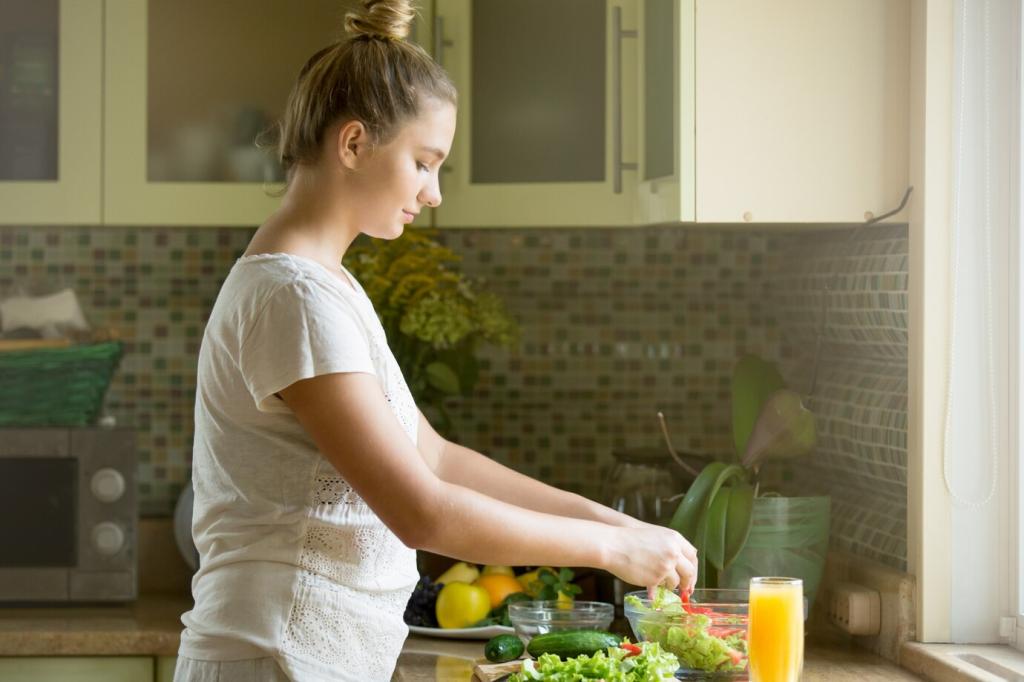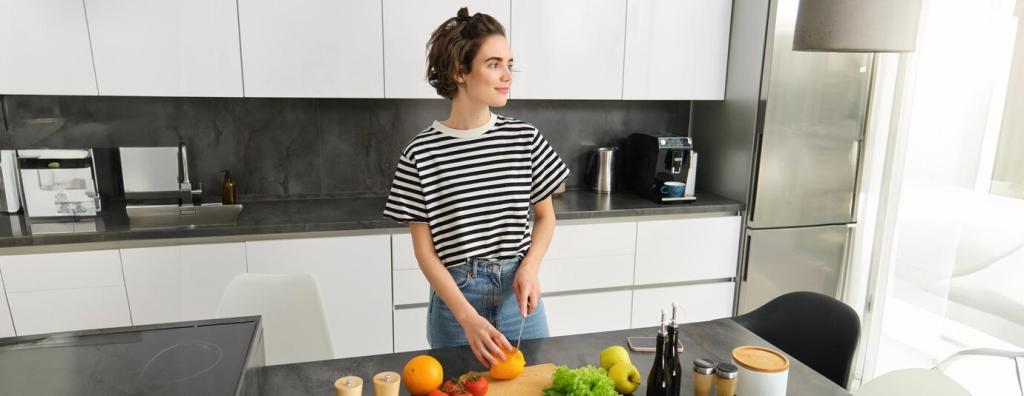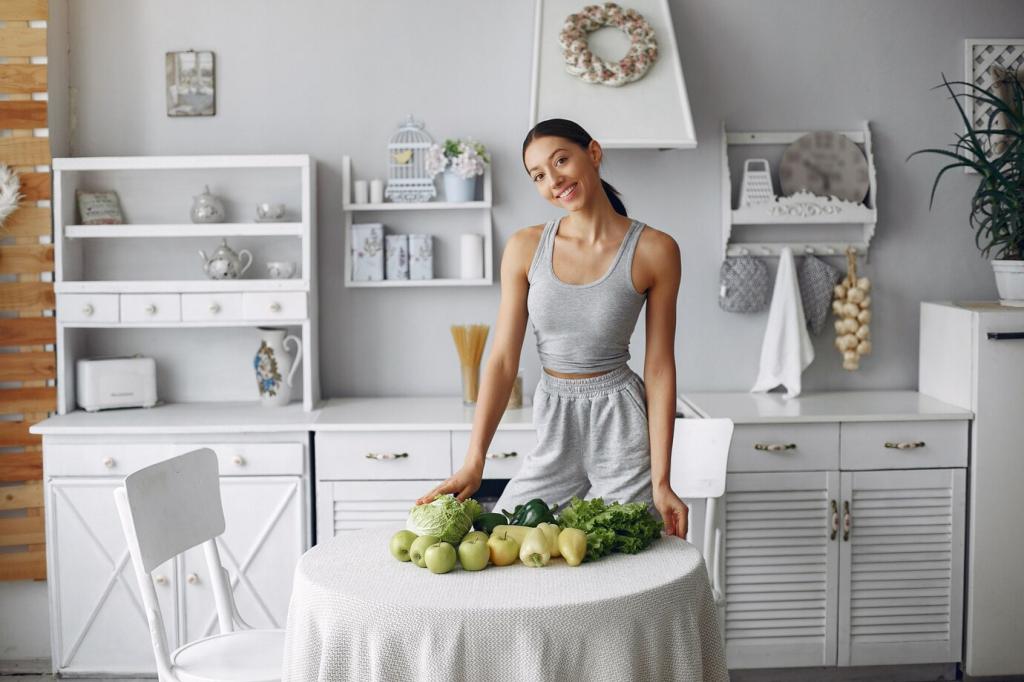Zoning and Storage That Accelerate Every Task
Place cutting boards, knives, colanders, and towels near the sink to shorten wet-to-heat transitions. A small prep sink by the cooktop can reduce dripping treks across the room. Every saved step keeps burners and water running for fewer minutes. Try rearranging one shelf and tell us what changed.
Zoning and Storage That Accelerate Every Task
Full-extension drawers bring items to you, reducing crouching and door-wandering while the oven or fridge runs. Categorize by frequency of use, not just size. Labeling inside drawer lips helps the whole household maintain order. Show us your most chaotic drawer, and we’ll propose a tidy, efficient reorg.
Zoning and Storage That Accelerate Every Task
Group tasks: wash all produce at once, chop in batches, and pre-portion ingredients. By committing to mise en place, appliances run in shorter bursts at optimal settings. It feels pro, saves time, and reduces stumble moments. Share a photo of your prepped bowls; we’re excited to feature your setup.




